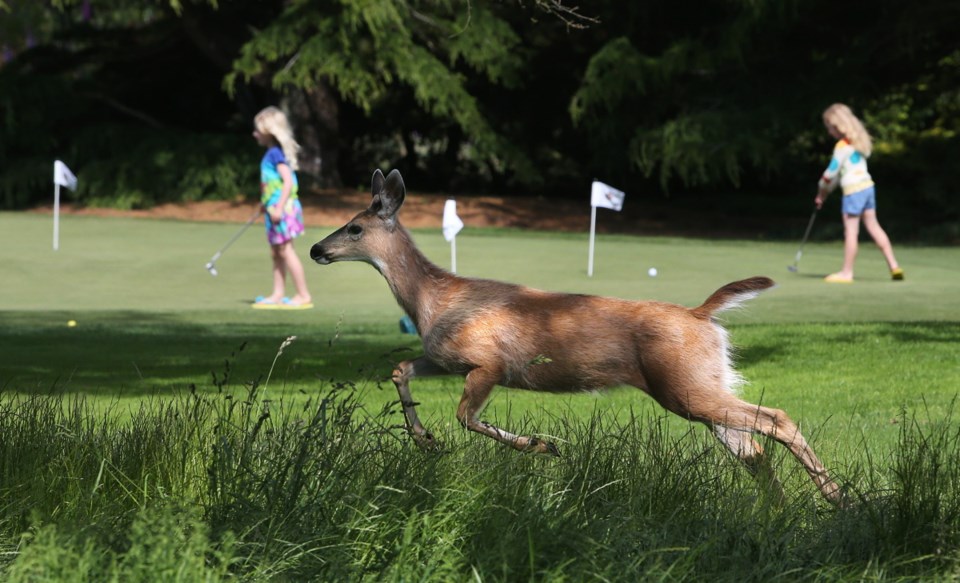Blacktail deer will be culled in Oak Bay over the next year through the first pilot project of its kind on Vancouver Island.
Oak Bay council has approved a plan that will see the municipality partner with the Capital Regional District to have 25 deer trapped and killed, with the venison, hide, antlers and hooves going to Songhees First Nation.
The aim of the $12,500 initiative is to reduce the number of deer and calm annoyed residents who have long complained about the deer taking over backyards, munching on garden shrubs and devouring home-grown vegetables.
There’s also a public safety issue, said Mayor Nils Jensen, because more deer are getting struck by vehicles. Last year, 23 deer carcasses were retrieved from roadsides by public works crews. There have been 34 so far this year.
The fresh meat will be welcomed by Songhees First Nation, said elected Chief Ron Sam.
“Our hunters have a hard time getting deer as it is, because the deer all seem to be down in the residential areas,” Sam said.
“I always said to the mayor, if there’s going to be a cull, I would hate to see [the deer] be wasted.”
The most common method for catching deer is baiting them with apples or alfalfa in a “clover trap” made of netting, said Sean Pendergast, wildlife biologist with the Forest, Lands, and Natural Resource Operations Ministry.
The deer is caught in the net and killed with a bolt gun, which drives a metal bolt into the animal’s brain, similar to what is used on cattle in slaughterhouses. Other animals that are inadvertently trapped can be released without harm, Pendergast said.
The province will require a detailed plan of the cull before a permit is issued, he said.
An animal-care committee would oversee the humane issues, such as how long animals would be allowed to stay in traps and what would happen if one is injured in the trapping process. Blood and other samples would likely be taken from captured deer for scientific study, Pendergast said.
Butchering would be done on site.
Winter is the best time to trap deer because there are limited food sources, he said.
Both bucks and does, which on the Island are evenly represented in the deer population, will be targeted, Pendergast said. Deer in this area can live 12 years or more, and start reproducing at about 18 months. Their home range is about a square kilometre.
“They teach the young that this is their home — this is how they reach such high local concentrations,” Pendergast said. “The bucks will wander quite a bit more, and will wander for kilometres and kilometres for does in heat.”
Deer numbers have exploded on the south Island because development is encroaching on areas where wildlife roamed. The presence of people tends to drive away cougars and wolves, the natural deer predators, Pendergast said.
Invermere, Kimberley and Cranbrook held urban deer culls in 2012.
smcculloch@timescolonist.comm



